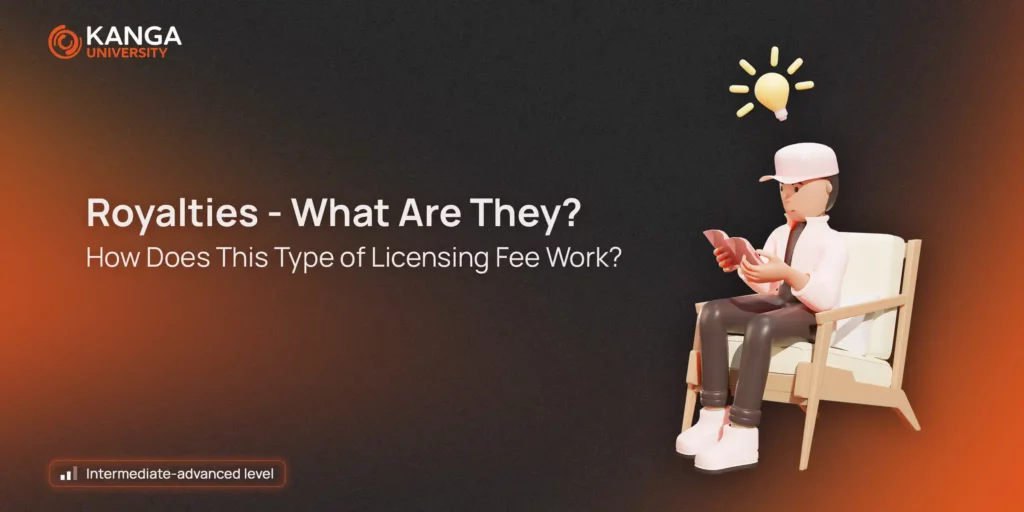
In today’s lesson, we’ll talk about payments, or in fact, their methods. One of them is the so-called royalty payments, which are nothing more than a variation of license fees. Royalties are payments to individuals, or companies, for the use of their assets. These can be copyrighted works, natural resources or even franchises.
A good example of such royalties would be the payments that musicians receive for the use of their works in films. In the vast majority of cases that we know of, royalties compensate the owner for the use of his license for a particular item.
TTS: How Do Such Royalties Work in Everyday Life?
To get to the topic of royalties, we must first understand how license fees work. License fees are usually a percentage of the revenue, gross or net, generated from the use of a thing. They can be negotiated on a case-by-case basis, and in practice, the percentage depends on that as well.
In the case of royalties, the process works very similarly. The creator of a particular thing or work may choose to sell the product in question, in exchange for royalties from the future revenue that the product, such as a piece of music, will generate. This is how Microsoft operates. Computer manufacturers pay the company royalties, for the use of its operating system.
The licensing agreements benefit the licensor (that’s the person who receives such royalties) as well as the licensee (that’s the person who pays for the royalties). For the licensor, such an agreement is a door to new opportunities, and for the licensee, access to products that no one else has access to.
Royalties cover many different types of properties. Let’s have a look:
- Franchise royalty. It happens when a business owner pays a royalty to the franchisor for opening a store, for example. In Poland, a good example of this would be the popular “Żabka” chain (like 7-Eleven in the USA).
- Patent. We deal with it when someone patents their product. Then, if we want to use such a product (or service), we have to buy a license. In this way, the innovator in question gets paid for their intellectual property.
- Book royalties. In practice, they are paid to authors by publishers. For each book sold, the author receives a pre-agreed amount.
- Mineral rights. Yes, there are fees in this sector as well. They are paid by entities that extract, for example, oil on property owned by someone else. For lending a plot of land for such a purpose, the landowner can demand a royalty.
- Entertainment royalties. This type of royalty refers to music, protected by copyright. The creator, or rather the owner of such a work, receives a certain amount every time his music is played on the radio, in a movie or used by a third party.
So as you can see, there are quite a few types of royalties. Remember, however, that the terms of license fees or royalties are defined in the contract. Importantly, this type of contract is subject to unique legal regulations. In everyday life, many conditions affect the amount of such a fee. All transactions that involve royalties must be conducted on market terms. This means that the agreement and cooperation is voluntary, not forced.
Royalties in the Cryptocurrency Market
If this type of payment had not appeared in the cryptocurrency sector, we would not have mentioned it to you. In fact, royalties are the distinguishing feature of non-fungible tokens. They have this amazing ability to pay royalties to artists and designers.
NFT royalties work virtually the same way – they provide the artists in question with a percentage of sales each time their works are resold. It doesn’t matter how many secondary sales occur, the fees will always be returned to the original creator. And what’s most interesting – this process is completely automated by blockchain technology and smart contracts. So we can confidently say that in the case of NFTs, artists make money indefinitely.
How Does this Whole Process Work?
The amount of royalties depends on the conditions specified in the smart contract, when minting a given NFT. It all depends on the platform on which you mint the token. You will ask – how is this possible? All thanks to the immutability of blockchain technology. In this case, the protocols assure us whether the requirements in the smart contracts have been met and whether the appropriate action has been taken to implement them. Here it will be the payment of royalties.
In addition, unlike the licensing agreements discussed earlier, in this case the blockchain will perform these functions on its own. The artist, or rather the NFT creator, does not need an agent or other intermediaries to help him. With this process he gets full control over his work and also avoids disputes over ownership. Moreover, the amount earned depends on secondary sales.
Summary
Royalties are the way owners earn money from their assets. They come in the form of contracts or licenses, with specific terms under which a third party can use the works in question. There are a whole lot of royalties! Some of the contracts are for a fixed term, and some are indefinite.
For non-fungible tokens, the process works very similarly. In this case, however, it is subjected to greater automation. Creators have full control over their creation, right from the moment it is made or minted. Their earnings also depend on the amount of secondary sales. In this situation, artists are assured that they are being fairly compensated for their work.
Complete today’s lesson!